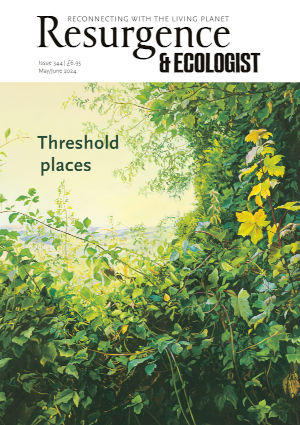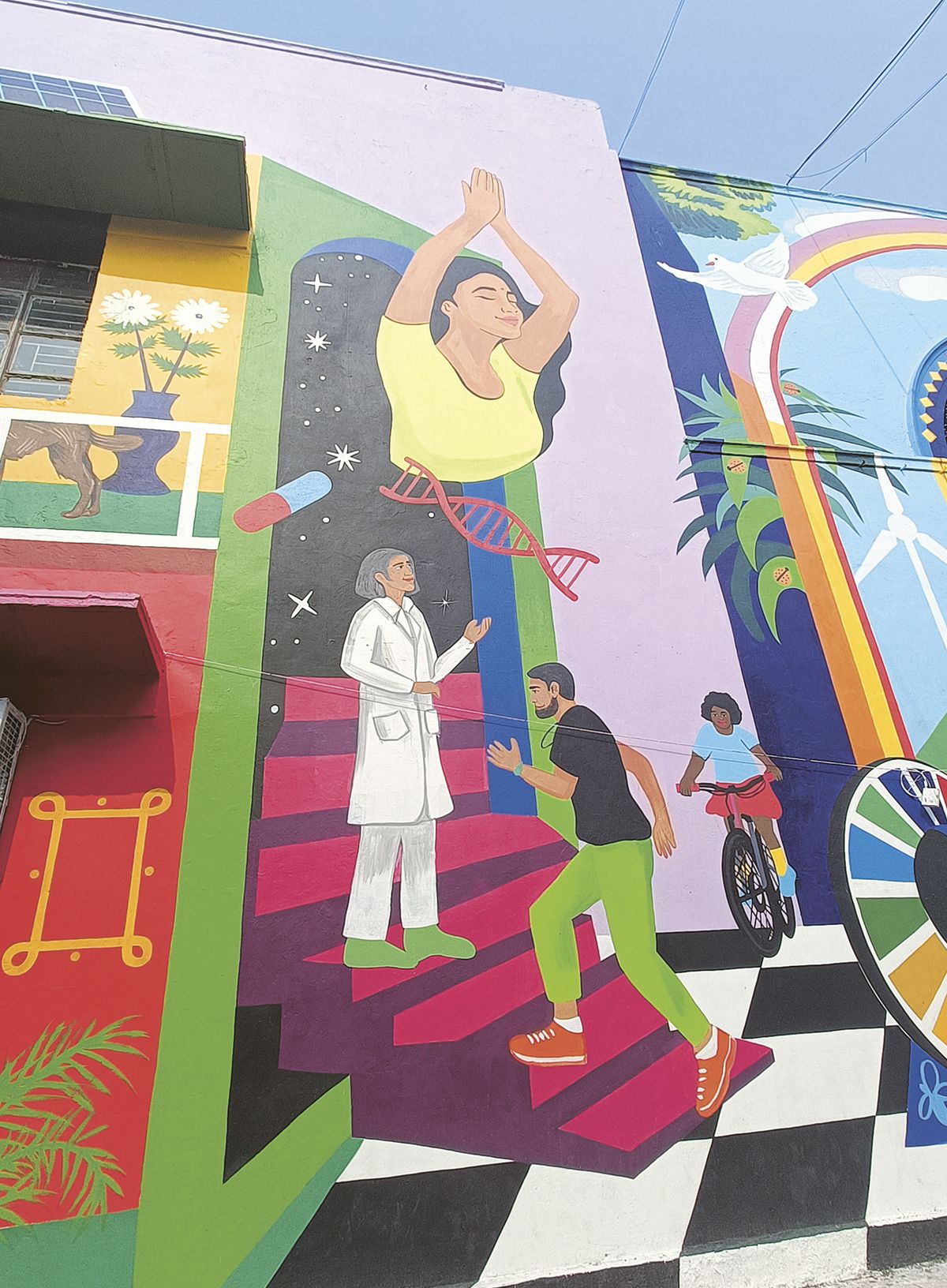On my last day in Delhi my friend Sunil Malhotra asked if I’d like to go and see the open-air art gallery of the Lodhi neighbourhood. I said ‘yes’ and so we spent the morning visiting street after street, admiring the fabulous colours and beautiful images painted on the walls of residential buildings.
In 2015, a group of 50 accomplished artists from around the world started transforming the ordinary walls of Delhi into these extraordinary artworks, and since then they have been successful in not only bringing art to people but also revitalising the street life of this close-knit community spread across five square miles.
When Sunil first mentioned street art I was curious, but I could not have imagined the breadth and scale of it all. It is more than street art – it is whole neighbourhood art. I saw the images of traditional Indian icons such as sacred cows and lotus flowers. I saw the decorated faces of classical dancers, vernacular cultures of village women, and a Love Tree in a magnificent red colour. There was eco-art to highlight the plight of endangered animals and to warn people about the impending catastrophe due to global heating. There were political cartoons and spiritual imagery of a way to nirvana.
Many of these images are projecting a meaning and a purpose. Nature, life and love are the enduring themes of art all over the world and this freshly painted and unusual graffiti in a corner of Delhi is no exception. The only difference is that much of mainstream art is hidden behind closed doors protected by security guards, whereas in these streets and in this community, art is part of life!
Art is not simply decoration, or just pretty pictures for entertainment. In this neighbourhood of Delhi, art tells a story, communicates a message and engages people in the contemporary questions of our culture.
Sunil explained that the project to bring such beauty and aesthetics into everyday life is being supported by the local residents, by government agencies, and by the foreign embassies of more than 20 countries. This is an example of creative collaboration between countries and communities, artists and authorities, businesses and citi-zens and is coordinated by St+art India Foundation. It is a good example of a gift economy. The artists have donated their time and talent, businesses have donated paints and brushes, and many other gifts have come from various sources.
These visionary art activists had a dream – a dream to free art from the confines of museums and art galleries. Art for them is not, and it should not be, just a commercial commodity: art is, and should be, a way of cultural enrichment. These avant-garde artists believe that art needs (and deserves) to be a part of everyday activities. Museums attract just a few hundred visitors a day who see art as an object of entertainment or as an academic subject or a financial investment or a symbol of status. In contrast the radical street artists in Delhi want to make art accessible to everyone, every day and in every place. Thousands of people walk through these streets and look at the images and no one is required to buy a ticket!
This is a contemporary version of the traditional rural culture of India where Indigenous people adorned the walls of their homes with magnificent murals. Art for them was integral to life. Their clothes, shoes and tools, their pots and pans and other objects of everyday use were made well, made by hand, with love, made to last and made to please the senses. All their possessions had to follow the fabulous BUD principle: Beautiful, Useful and Durable. For them an artist was not a special kind of person, but every person was a special kind of artist.
Artisan food and artisan clothes were nothing special. Art was a way of being. They believed that if you have legs and if you can walk then you can also dance. If you have a voice and if you can speak then you can also learn to sing. If you have hands then you can learn to write, to paint, to draw and to sculpt.
Indigenous people believe that every single human being is gifted with the potential of being creative and imaginative. We all need to learn to cultivate our creativity and develop our imagination. It is all there, within each and every one of us. We don’t have to go to a shop or to a supermarket to buy imagination: we are born with it, it is within all of us, often sitting dormant. Our challenge is to awaken that innate imagination of ours and allow it to flourish.
For Indigenous people art isn’t just for entertainment. Art isn’t just for performance. Art isn’t a commercial commodity. Art for them is a way to celebrate life, to give thanks to creation, to bring blessings to people and to build community and culture. Art is for the re-enchantment of the world and to evoke a sense of the sacred.
By bringing art out of museums and into the streets, this little corner of Delhi is showing a new way, which is also the old way. These street artists are bringing art out of the market and museums and installing it into our lives and into our streets. My hope is that this people’s art may inspire everyone to be an artist and a maker rather than simply a consumer!








